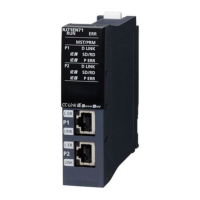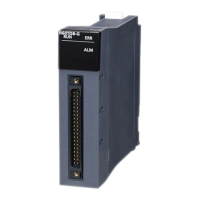31 POSITIONING INSTRUCTION
31.1 Common Items
419
31
31 POSITIONING INSTRUCTION
This chapter describes positioning instructions that are used in the positioning function.
For the expression and execution type of the applied instruction, refer to MELSEC iQ-F FX5 Programming Manual
(Instructions, Standard Functions/Function Blocks).
31.1 Common Items
This section describes the common items in the positioning instruction. For auxiliary functions, refer to Page 367 Auxiliary
Function.
Operand specification method
The operand specification method includes two types: FX5 operand and FX3 compatible operand. The operand setting differs
depending on the specification method. The items that cannot be set through operands positioning instruction follow the
setting values of the positioning parameters. (Page 376 POSITIONING PARAMETER)
The FX3 compatible operand is supported only in CPU module.
The DDSZR, DRVTBL, DRVMUL, and DABS instructions have only one operand specification method.
Start speed
The start speed of instructions for specifying positioning addresses and table operation control methods, except for the PLSY/
DPLSY instruction, PLSV/DPLSV instruction, and table operation instruction (control method: [4: Variable Speed Operation] or
[5: Table Transition Variable Speed Operation]), is calculated by the following equation:
• Start speed = (Maximum speed - Bias speed) Acceleration time
The start speed varies as follows, depending on the command speed and bias speed:
(1) Bias speed < Start speed < Command speed: Start speed = Start speed (the value from the equation above)
Acceleration time (7 ms)
Maximum speed (100 pps)
Approx. 13.6 pps
Approx. 13.6 pps
Approx. 13.6 pps
Approx. 13.6 pps
Approx. 13.6 pps
Approx. 13.6 pps
Approx. 13.6 pps
Command speed (45 pps)
Speed
Time
Bias speed (5 pps)
Maximum speed: 100 pps
Bias speed: 5 pps
Command speed: 45 pps
Acceleration time: 7 ms
Start speed =
100 pps - 5 pps
7 ms
= 13.57… (pps)
In the case of Bias speed (5 pps) < Start speed (Approx. 13.6 pps) < Command speed (45 pps)

